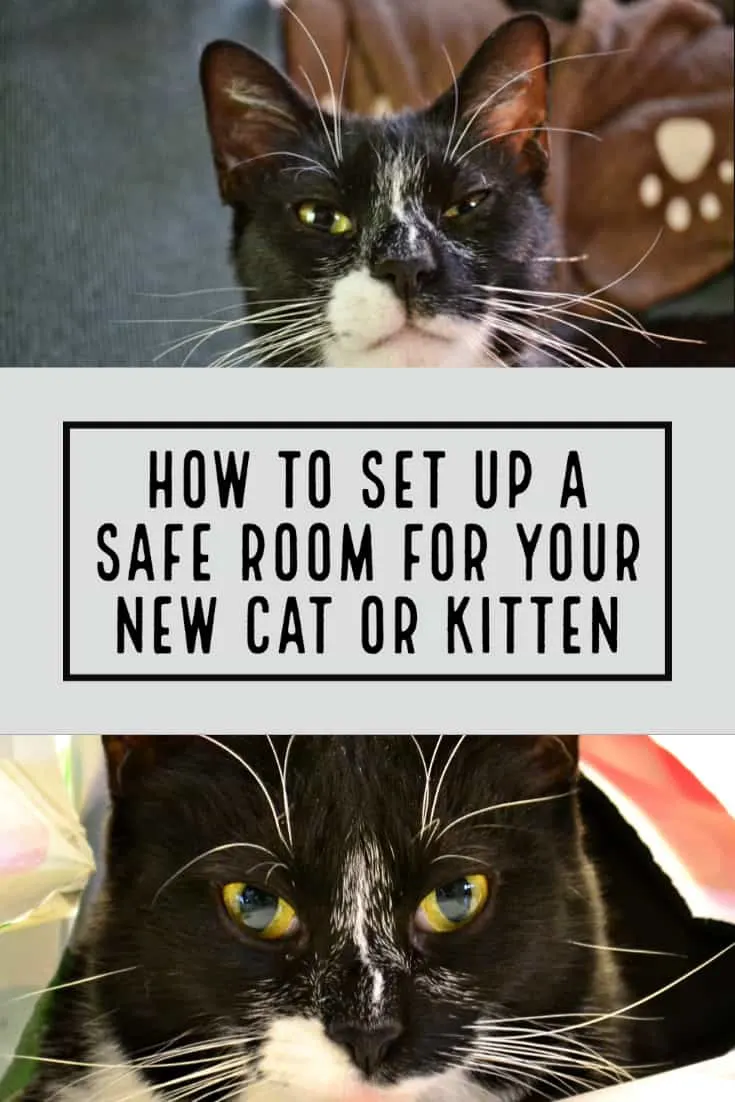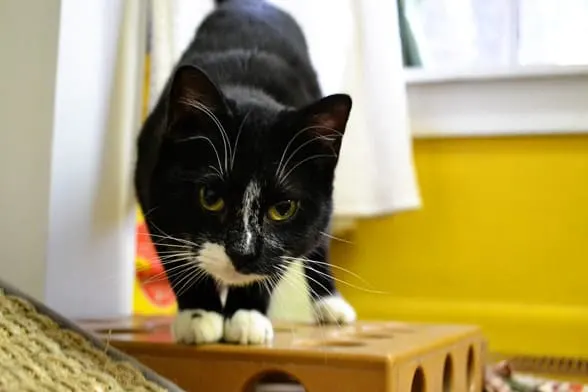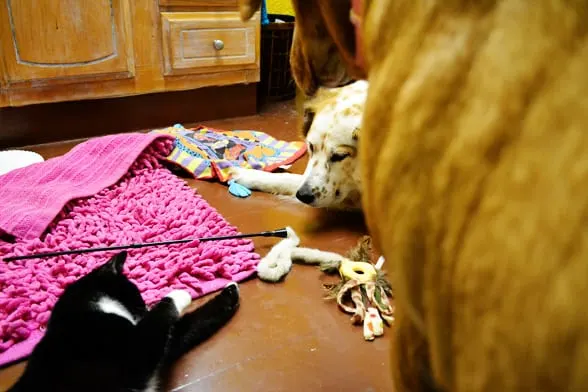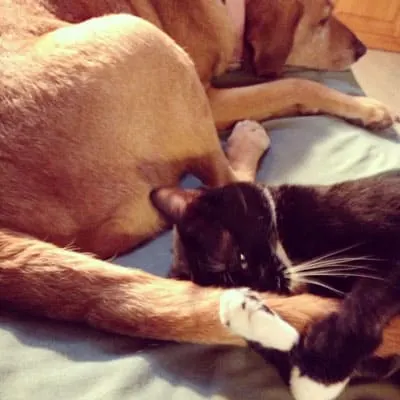As you all know (because we just can’t stop talking about it!), last week we adopted little Lucky. He came to our home on Friday afternoon. What was his first stop in his new home? The bathroom became his safe room.

For Lucky, the bathroom was a place for him to decompress after his stays in two shelters.
Lucky came to us with some sniffles, too, so we needed to keep him separated from our other three cats until that cleared up.
The safe room also gave the other cats the chance to get accustomed to the fact that there was a new cat in the house without the stress of a face-to-face visit. (Once you are ready to introduce your cats, don’t miss our post on 10 tips to help introduce your new kitten to other pets.)
The day before we went to the Austin Pets Alive! shelter, we prepared the safe room, hopeful that we’d be bringing home a new furry family member. Here are the steps we went through to prepare the room!

Clean and make sure the room is kitten friendly.
We first vacuumed and swept the room, making sure there was nothing harmful in the room tucked in some corner.
We got down on the floor just to doublecheck that there was no dental floss or hairbands or anything else that a kitten could get and ingest.
We removed the only plant in the room (an aloe vera.)
Clear off the counters.
We cleared off the counters, removing everything that a kitten could either knock down or get into and risk harm.
We secured the closet door so a kitten couldn’t open it.
Secure the curtains.
We removed the curtains.
Our bathroom had no blinds or anything with long strings; if there had been, those would have been removed due to a hanging risk.
Add a litterbox.
We placed a litterbox with low sides in the room. You’ll find kitten-height litterboxes at the store; if you don’t have one with low sides and your kitten is very young, you can also use a cardboard box lid for the first day.
Add food and water bowls.
Use bowls and plates that can be thoroughly cleaned in your dishwasher.
Add some fun.

We moved some wand toys as well as other cat toys that a kitten could play with unsupervised including a toy with a bell so we could hear if he were playing.
Lucky Visits the Safe Room
When we came home with Lucky, we immediately took him straight to his safe room, leaving the cat carrier opened in the room in case he felt like he needed a smaller place to retreat. (He didn’t so we wound up removing it the next day to give us a little more room.)
Lucky immediately took to his new room. He could sit in the window and check out the birds outside. We filled his water bowl and food bowl (with the same food supplied by the shelter, so he didn’t have that transition on arrival.)
We first filled his litterbox with non-clumping litter but, after two accidents next to rather than in the box, we ran to the store to purchase the same brand the shelter was using: Tidy Cats clumping litter.
I’m not sure if it was the finer grade of the litter that he liked or if he just needed a day to really feel at home and understand that this was his litterbox, but that was the end of any litterbox problems! (If you need to switch your kitten off his shelter litter, don’t miss our post on “Switching Cat Litter Brands: How to Make the Change.”)
The safe room proved to be a great place for Lucky to get comfortable in his new home and play with us without the other cats feeling jealous or nervous. Lucky became restless after a few days so we introduced the dogs into the safe room (with supervision), and everyone got along wonderfully:

Lucky is now enjoying the rest of the house with everyone else, a successful transition due, in part, due to his first days in the safe room!

- 🎉 GIVEAWAY: Lord of the Pets Portrait of Your Cat! - November 26, 2024
- Review: Lord of the Pets Cat Portraits! - November 26, 2024
- Cat Adoption: FAQ You Might Have - June 28, 2024
